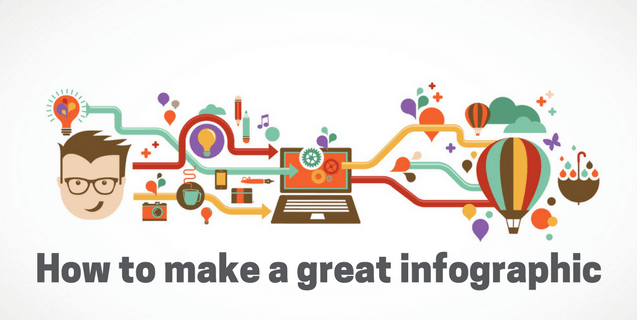In an increasingly cluttered web, your content is competing for your reader’s attention. If your content can effectively grab readers’ attention, your message stands a much better chance of reaching its target. When you only have a few seconds to capture people’s attention, a colorful, bold infographic is much more likely to catch their eye than a blog of text.
Despite the many advantages, infographic creation can quickly go awry. Fortunately, armed with a few key design principles and some online tools for building infographics, you’ll have no problem harnessing the power of this awesome form of content.
Infographic Design Tools
The ‘graphic’ part of infographic design may immediately conjure frightening images of intricate graphic design programs. Fortunately, those days have passed. Web applications like PiktoChart and Canva were designed specifically for those of us who aren’t well-versed in complicated design programs.
What’s more, both applications offer free versions, so you can start designing infographics with nothing more than an email address. Do note that the free version of Piktochart places a watermark on all infographics you create.
The Principles of Infographic Design
Armed with one of these graphic design applications, we’re ready to start creating infographics. But even with these tools, you’ll still need to keep certain considerations in mind to prevent your infographic from flopping.
1. Write a great headline
Just like a good blog post or article, an infographic needs a good title to grab the reader’s attention. Don’t tell the reader everything in the headlines—just enough to get them to want to read more.
2. Create a logical flow
The big advantage of an infographic is that it logically presents a flow of ideas and data in a visual format. That is, of course, when it’s done right. It may help to come up with an outline of the ideas you want to express first and then designing the infographic second, so your argument flows visually and logically.
3. Focus your content
Because infographics give you the power to distill complex information, it may be tempting to overload your infographic with information. However, if there is too much going on, you’ll quickly lose readers as they struggle to navigate your infographic. Highlight your main argument and stay focused on supporting that argument with relevant facts and statistics.
4. Target your audience
You should choose design elements that will resonate with your specific audience. For example, if you’re creating content for an oil painting course, you might design an infographic with a canvas or graphics reminiscent of oil paintings as your background. Simple graphic details can promote a feeling of familiarity and attract your readers.
5. Pay attention to length and size
Just as you should maintain focus, so should you maintain a manageable size for your infographic. Using visual elements does not make your infographic immune to information overload. Keeping your infographic short and concise will improve reader engagement and promote social shares.
6. Balance text and graphics
There are two parts to an infographic, and they’re right there in the name for you: “info” and “graphic.” As such, you should take great care to tell your story with both text and graphics. Text should be relatively short, just enough to list relevant facts or to draw the reader’s eye to the main point. Similarly, graphics should always remain pertinent and straightforward. Don’t be afraid of white space as it is vital for good design.
Above all, make sure to keep your main point in mind, and don’t get too mired in design details that you lose your purpose. All text and graphics should solidly contribute to your argument.
With these tips, you’ll find designing your own infographic to be straightforward and even fun. Want to know more about how infographics can communicate your message and promote your brand? Our team of content experts is standing by to answer your questions!
